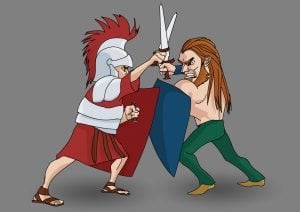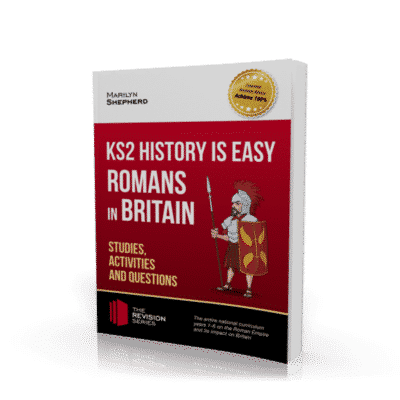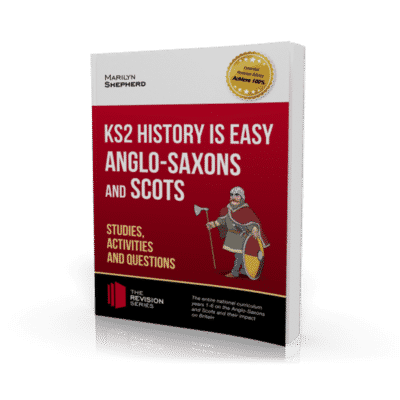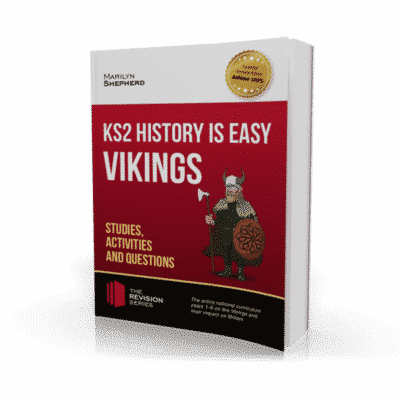The recent government changes to the national curriculum have caused a major shake-up in how children are being taught at primary school. Of course, the subject of history was affected, with a new government guideline being introduced, detailing what topics will be covered. Below, we have broken down this new Key Stage 1 and Key Stage 2 History curriculum by what its aims are, and indeed by the specific historical topics it mentions. So, if you do not know how your child’s history education has been changed, you’ve come to the right place. See below for a rundown of what the new national curriculum says about primary school history.
Why are children taught history in schools?
History is part of the primary syllabus. Studying history gives children an introduction to the major events which have shaped Britain, and provides them with a better understanding of historical global relations. The aim of the subject is to inspire a deeper curiosity for how society has changed over the course of time.

What are the aims of the Key Stage 2 History Curriculum?
The syllabus provides children with:
- An understanding of British history as a chronological narrative, from ancient times to the present day. It focuses on how British people have been influenced by the rest of the world, and how they have made their own influence felt.
- An understanding of the essential events and features of the history of the world as a whole, focusing on the earliest civilisations, most powerful empires, and the ways in which humanity has succeeded and failed.
A wide historical vocabulary and an understanding of key terms and concepts such as ‘civilisation’ and ‘society’.
- An introduction to wider historical concepts such as: continuity and change,cause and consequence, similarity, difference, and significance; and how to use them to make connections, draw contrasts, analyse trends, frame historically valid questions, and create their own structured accounts, including written narratives and analysis.
- An understanding of the importance of evidence when putting forward historical opinions. This also includes thinking about why some people interpret events or facts differently.
- An introduction to historical perspective, by considering contexts such as location, economics, politics, religion, and key points in time.
Key stage 1
Below we have outlined specific criteria that should be considered when studying the History subject at Key Stage 1.
Pupils should:
- Develop an awareness of the past, using common words and phrases to describe the passage of time.
- Know where the people and events they study fit within a chronological framework, and identify similarities and differences between ways of life in different periods.
- Use a wide vocabulary of everyday historical terms.
- Ask and answer questions, choosing and using parts of stories and other sources to show that they know and understand key features of events.
- Understand some of the ways in which we find out about the past, and identify different ways in which it is represented.
Key focuses:
- Changes in national life within living memory.
- Historical events beyond living memory, with national and/or international significance.
- The lives of individuals who have contributed significant achievements.
Key stage 2
Below we have outlined specific criteria that should be considered when looking at the Key Stage 2 History curriculum.
Pupils should:
- Continue to develop a chronologically secure knowledge and understanding of local, British, and world history.
- Establish clear narratives within and across the studied historical periods.
- Note connections, contrasts, and trends over time and develop the appropriate use of historical terms.
- Address questions about change, cause, similarity, difference, and significance.
- Construct informed responses that involve thoughtful selection and organisation of relevant historical information.
- Understand how our knowledge of the past is constructed from a range of sources.
Key focuses:
-
- Changes in Britain from the Stone Age to the Iron Age.
- The Roman Empire and its impact on Britain.
- Britain’s settlement by Anglo-Saxons and Scots.
- The Viking and Anglo-Saxon struggle for the Kingdom of England, up to the time of Edward the Confessor.
- A local history study (this will of course vary from school to school.)
- A study of an aspect or theme in British history that extends pupils’ chronological knowledge beyond 1066. (E.g. the changing power of monarchs – using case studies such as John, Anne, and Victoria.)
- The achievements of the earliest civilisations, such as Ancient Egypt or Ancient China.
- Ancient Greece, its achievements, and its influence on the western world.
- A non-European society that provides contrasts with British history, such as early Islamic civilisation, or the Mayan civilisation.
To sum up…
As you can see, the guidelines your children’s teachers follow to teach history at primary school are detailed and stringent. As a result, it is important that you understand the Key Stage 2 History curriculum so you can fully support your child’s learning. For a break down of the specific topic of ‘the Vikings’ at this level, follow this link. Also, if you’re looking for further learning resources for your child’s history learning, have a look at our range of revision guides:



